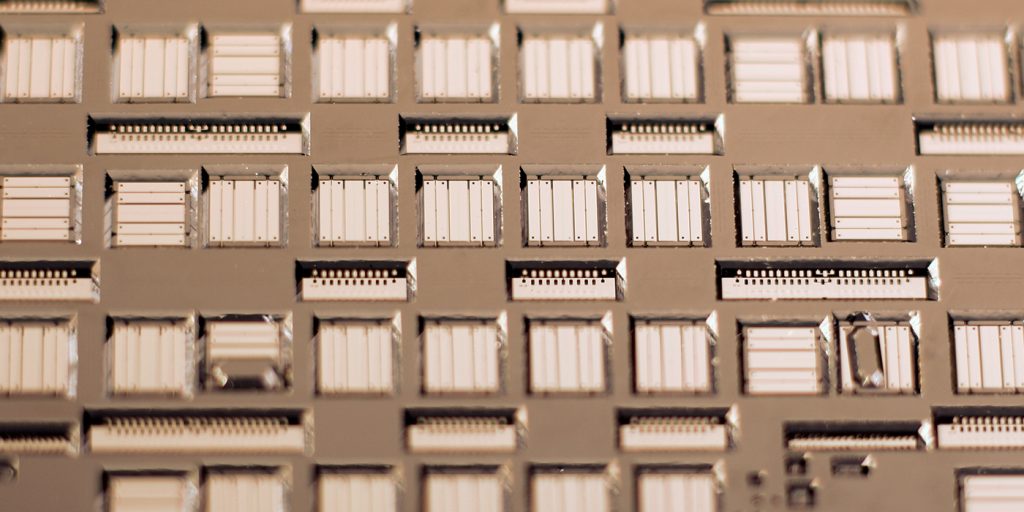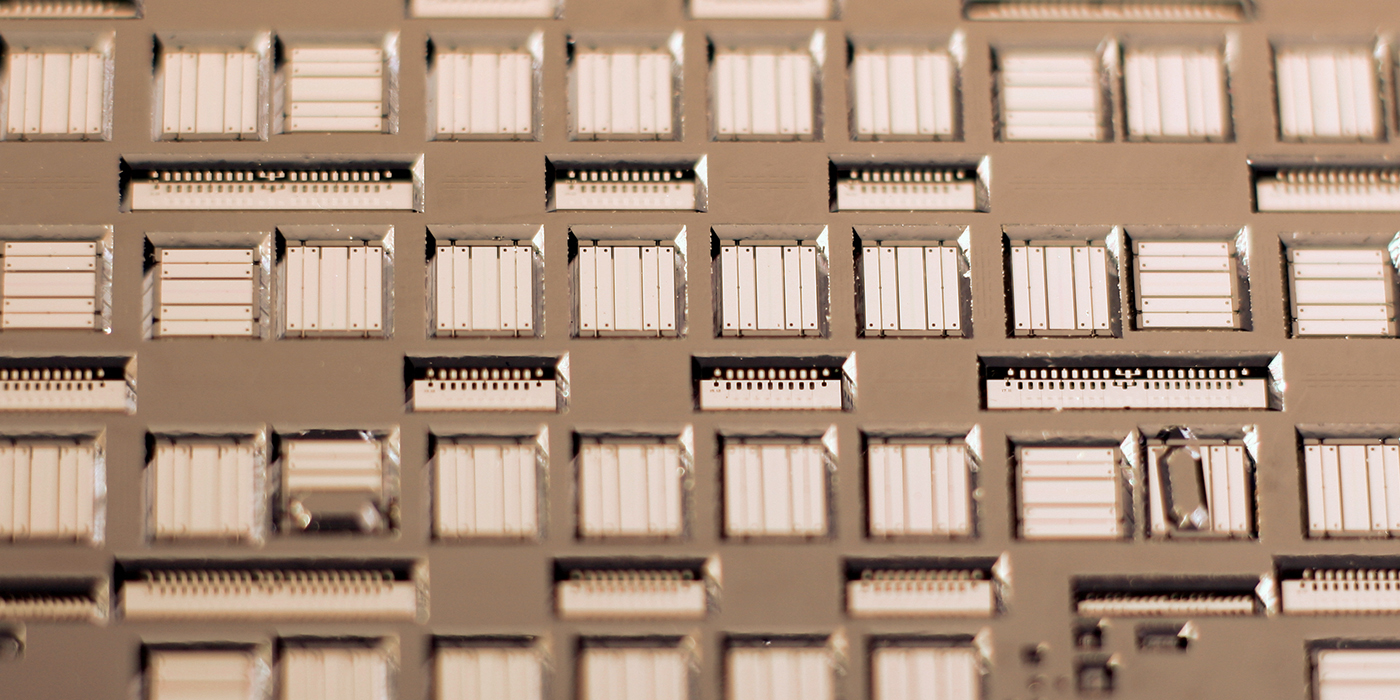
Micro-electromechanical systems (MEMS) have revolutionized various industries by integrating miniaturized mechanical and electrical components onto a single substrate, enabling the creation of highly sensitive and efficient devices. They are key elements in an array of medical, automotive, industrial, and defense applications.1
However, the success of MEMS devices often hinges on maintaining a hermetic environment to protect their delicate internal components. This is where glass frit sealing technology comes into play, providing a superior solution for achieving reliable hermetic seals in precise applications like MEMS manufacturing and packaging.2
Understanding Hermetic Sealing and its Importance
Hermetic sealing involves creating an airtight barrier around a device to prevent the entry of contaminants, moisture, and other external elements. This sealing technique is crucial for MEMS devices as even minute environmental influences can alter their performance or lead to premature failure. In applications where stability, precision, and reliability are paramount, such as in the aerospace, medical, and telecommunications industries, achieving a hermetic seal is essential.2
Glass Frit Sealing: The Ideal Solution for MEMS
Among the various methods available to achieve hermetic seals, glass frit sealing stands out as a versatile and high-yield approach, particularly suited for MEMS applications. This technique leverages the unique properties of glass to create a reliable, robust, and precise encapsulation for MEMS devices while imposing minimal stress on the bonding surface. In a three-step process, a glass paste is screen-printed on a capping wafer, which is then bonded to the subject device through thermocompression for 10 minutes. During this process, 1000 mBar of force and 440 °C are applied to the material under a vacuum. Capable of bonding both hydrophobic and hydrophilic surfaces, this technique can be applied to almost all commonly used microsystem surface materials, such as aluminum, silicon, and glass.3,4
Tailoring Precision Using the Coefficient of Thermal Expansion (CTE)
As the name implies, glass frit sealing makes use of glass particles, known as frit, which can be precisely formulated to match the coefficient of thermal expansion (CTE) of different materials.4 The CTE of a material refers to how its dimensions change with temperature fluctuations. By tailoring the glass frit’s composition, its CTE can be adjusted to closely match that of the MEMS device and the encapsulating material. This compatibility ensures that, when subjected to temperature variations, the seal remains intact without compromising the structural integrity of the device.2
Mo-Sci has been at the forefront of developing and perfecting glass frit sealing solutions for various high-tech applications, including MEMS devices. Its expertise lies in creating sealing glasses with customizable thermal expansion coefficients. With a diverse range of glass-metal and glass-ceramic seals that are meticulously matched in terms of CTE and are capable of enduring temperatures as high as 1600°C, Mo-Sci is an ideal partner for MEMS manufacturers seeking reliable hermetic sealing solutions.2,5
The Versatility of Glass Frit Sealing
The applications of glass frit sealing extend beyond MEMS devices and encompass a range of cutting-edge technologies:
1. Solar Cells
Sealing glasses find utility in encapsulating perovskite photovoltaic elements. These elements are promising alternatives to traditional silicon solar cells due to their high efficiency and lower production costs. However, perovskite cells are highly sensitive to moisture, whereby even small amounts can completely prevent function. Laser-assisted bonding of glass frit sealing guarantees a durable hermetic barrier, shielding perovskite cells from moisture exposure and locking in lead-containing chemicals.2
2. Metal Ion and Thermal Batteries
In the evolving landscape of energy storage solutions, glass frit sealing plays a pivotal role in enhancing the reliability and longevity of metal ion batteries, including lithium-ion and sodium-ion batteries. These batteries require seals that can withstand high temperatures and resist chemical corrosion. Sealing glasses provide a resilient barrier that enables the efficient operation of these advanced battery technologies.
Sealing glass is also a viable solution for molten salt batteries. These batteries are highly dependent on sodium salts, including sodium-nickel and sodium-sulfur chloride, to achieve remarkable energy and power densities. For this reason, they are an appealing option for large-scale industrial and energy storage applications.
Sealing glasses are classed as a high-energy alternative to conventional polymeric or metal seals as they exhibit excellent resilience against demanding chemical environments but also against the rigorous operating temperatures inherent to molten salt batteries, which can range from 300 °C to 350 °C.2
3. High Temperature Sensors
Glass frit sealing also finds applications in high-temperature environments, such as automotive systems and chemical processing plants. The predictable thermal expansion and corrosion-resistant nature of sealing glass ensure the longevity and stability of sensors operating in extreme conditions.2
4. Solid Oxide Fuel Cells (SOFCs)
SOFCs hold tremendous promise for clean and efficient power generation, but their high operating temperatures present engineering challenges. To create high-temperature sealant materials for SOFCs, Mo-Sci currently utilizes two methods. One relies on a traditional glass-ceramic seal, wherein the glass undergoes crystallization to establish bonds with the sealing components.
The second approach involves the development of viscous-compliant glass seals. These seals remain vitreous throughout application and can self-heal, mitigating the risks associated with thermal stresses and ensuring the long-term stability of SOFCs.This groundbreaking technology is anticipated to play a pivotal role in facilitating the commercialization of SOFCs and driving their widespread adoption.2,6
Embracing the Future with Glass Frit Sealing
Glass frit sealing technology has emerged as a promising solution for achieving hermetic seals in MEMS devices and a wide array of other advanced applications. By precisely engineering the properties of sealing glasses, companies like Mo-Sci enable manufacturers to create highly reliable and robust encapsulation systems.
As industries continue to push the boundaries of technological innovation, the role of glass frit sealing in safeguarding sensitive components and ensuring optimal device performance becomes increasingly vital.
References and Further Reading
- Forbes. Why Timing Must Be Tough Enough For Our Digital World. Available at: https://www.forbes.com/sites/forbestechcouncil/2021/09/02/why-timing-must-be-tough-enough-for-our-digital-world/ (Accessed on 10 August 2023).
- Mo-Sci. Sealing Glass Applications. Available at: https://mo-sci.com/sealing-glass-applications/ (Accessed on 10 August 2023).
- Chang H-D, et al. (2010). High hermetic performance of glass frit for MEMS package. 2010 5th International Microsystems Packaging Assembly and Circuits Technology Conference. https://doi.org/10.1109/IMPACT.2010.5699539
- Knechtel R. (2015). Chapter 31 – Glass Frit Bonding. Handbook of Silicon Based MEMS Materials and Technologies (Second Edition). https://doi.org/10.1016/B978-0-323-29965-7.00031-2
- Mo-Sci. Matching Coefficient of Thermal Expansion in Glass Seals. Available at: https://mo-sci.com/matching-cte-in-glass-seals/ (Accessed 10 August 2023).
- Mo-Sci. Sealing Glass. Available at: https://mo-sci.com/products/sealing-glass/ (Accessed on 10 August 2023).

